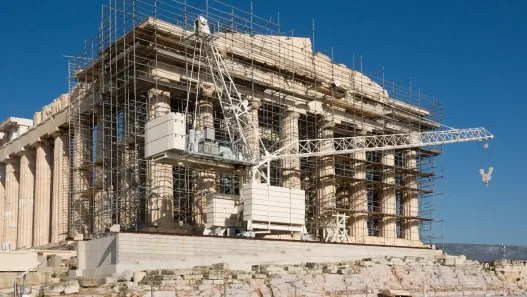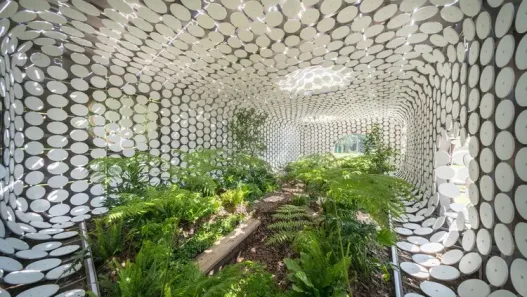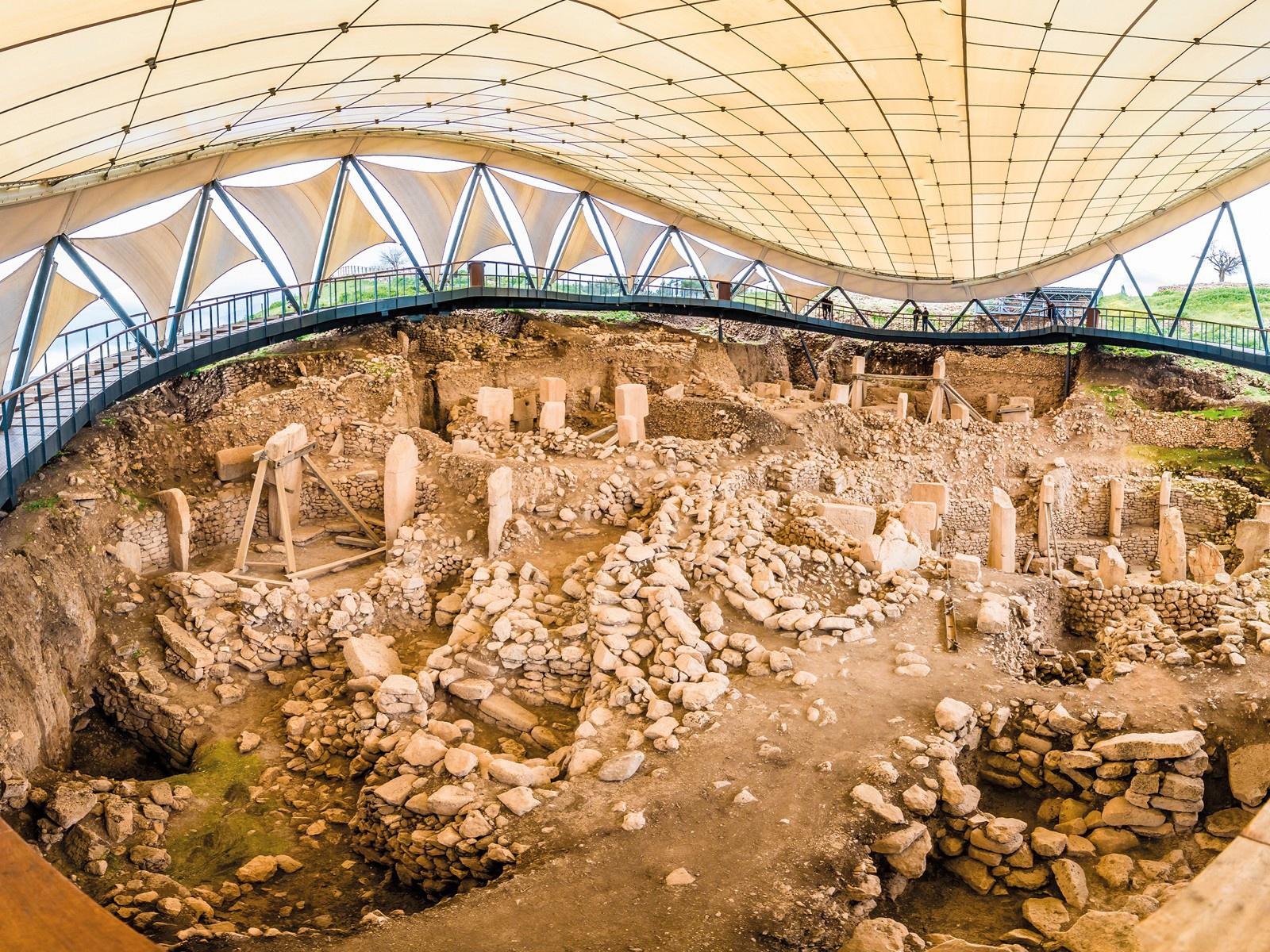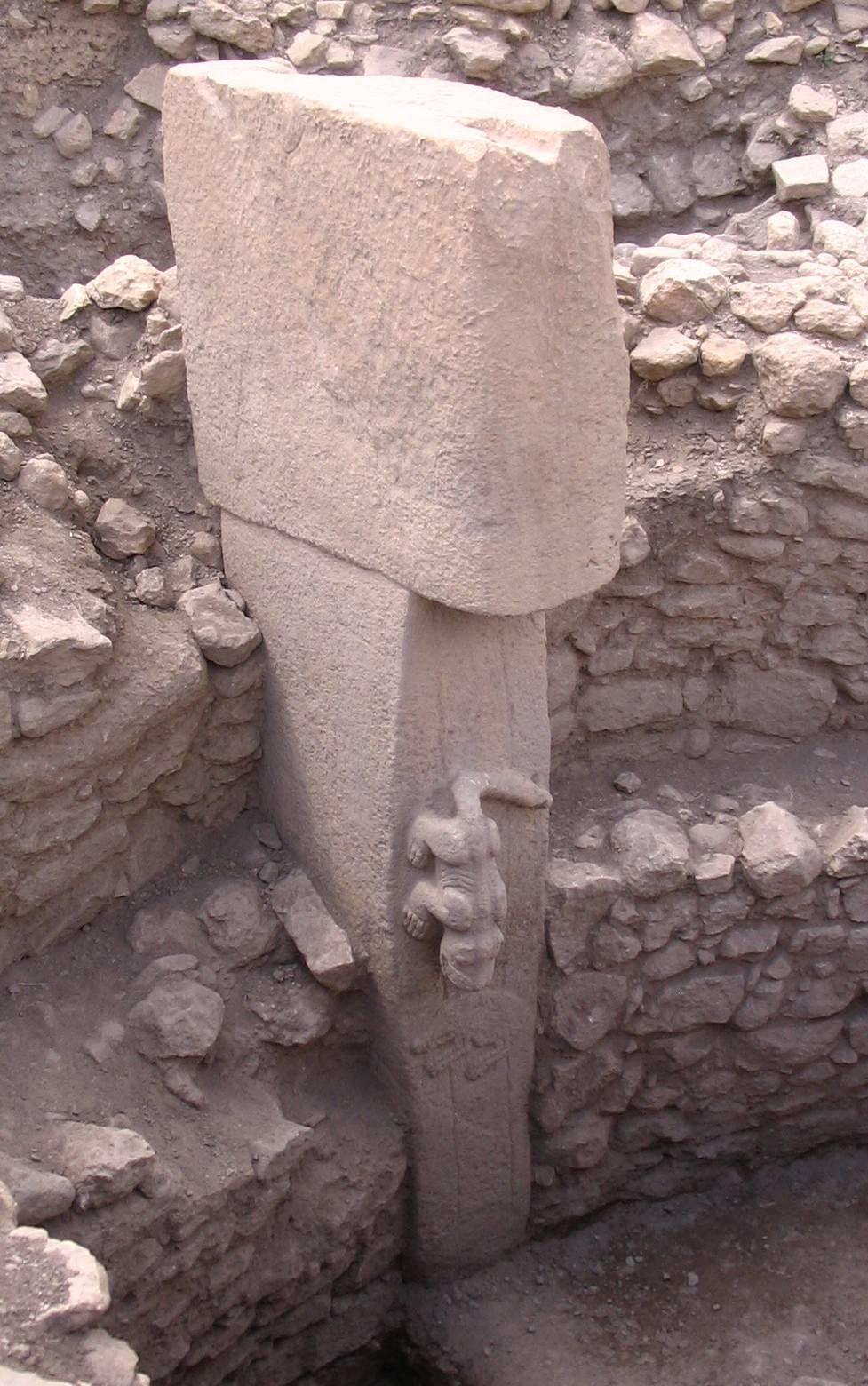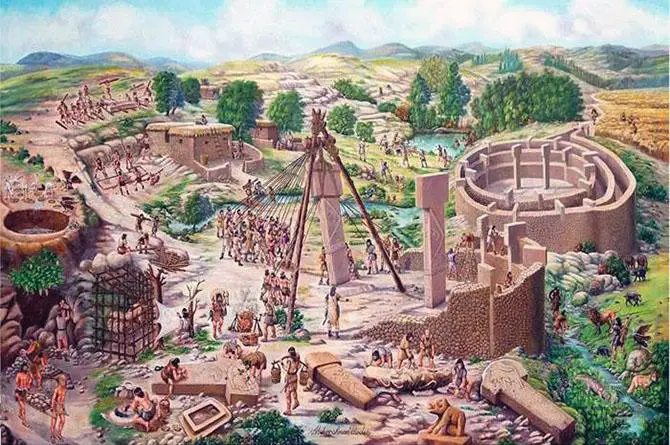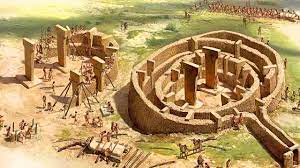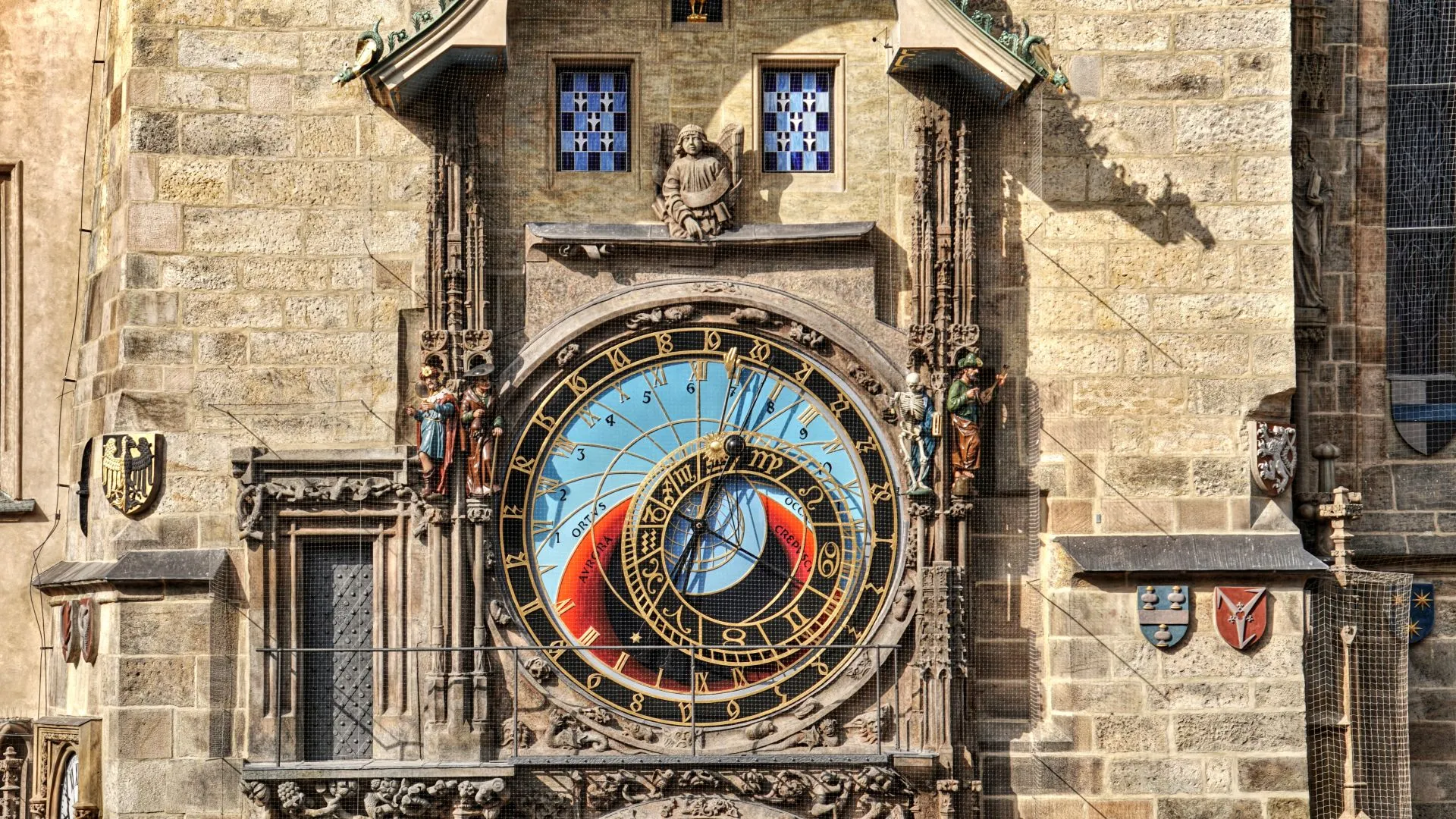Under the dark veil of time, humanity is slowly illuminating its own past. Archaeological discoveries are allowing us to rewrite history books and reshape our in-depth understanding of our past. One of these discoveries is Göbeklitepe. Considered the oldest temple complex known to mankind, it is an astonishing find from the prehistoric period.
Göbeklitepe is an archaeological site located near Şanlıurfa in southeastern Turkey. First discovered in the 1960s, it was only in the early 1990s that its true significance was discovered. Göbeklitepe’s most astonishing feature is its large obelisks, dating back 12,000 years to the Neolithic period and carved in extraordinary detail. This is the oldest known temple complex in human history and shows how deep and complex people’s belief systems were.
The discovery of Göbeklitepe has fundamentally changed our understanding of human evolution and civilization. The site shows how organized people were and how complex their belief systems were during the transition from hunter-gatherers to settled agricultural societies. The detailed reliefs on the obelisks reveal how advanced art and symbolism people developed at that time.
The discovery of Göbeklitepe raises many questions about human history. Who built this temple complex? Was it simply a place where religious rituals were performed, or was it a center of social interaction and organization? The answers to these questions are being elucidated through the ongoing efforts of researchers to further deepen our understanding of humanity’s past.
The discovery of Göbeklitepe is of great significance not only for Turkey but also for the world at large in terms of the origins and evolution of humanity. By shedding light on humanity’s past, this archaeological site makes a significant contribution to understanding our cultural and religious evolution. Göbeklitepe is not only an archaeological site, it is also the common heritage of humanity and an important historical treasure to be left to future generations.
Let’s explore the oldest ruins in history together…

Key Points
- Göbeklitepe is of great interest as the oldest known temple complex in the world.
- Belonging to the Neolithic period, Göbeklitepe represents a cultural transformation in human history.
- Göbeklitepe’s impressive architecture bears the traces of an era thousands of years ago.
- The temple complex presents the intricacies of prehistoric structures.
- The architectural study of Göbeklitepe provides a detailed account of the features and symbolic meanings of the temples.
The Discovery of Göbeklitepe
Details about the discovery of Göbeklitepe, the megalithic structures that attracted the attention of archaeologists and their historical significance. The discovery of Göbeklitepe is recognized as an important milestone in the field of archaeology. This ancient temple complex has aroused great interest as the site of the oldest known structures in human history.
Göbeklitepe is an archaeological site in the Şanlıurfa province of Turkey. The megalithic structures unearthed here date back to 9600-7300 BC. They consist of gigantic obelisks and show extraordinary skill and detail in stonemasonry.




”The discovery of Göbeklitepe proves that, contrary to popular belief, complex religious rituals existed even at the beginning of the Neolithic Age.” – Prof. Klaus Schmidt
The discovery of Göbeklitepe came as a great surprise to archaeologists and historians. Research has shown that the structures here were used for religious purposes and were a center where the religious rituals of the community were performed. This discovery has provided an important resource for understanding cultural transformation in human history and researching social structures.
| The Discovery of Göbeklitepe | Archaeological Findings |
|---|---|
| Discovering Archaeologist | Klaus Schmidt |
| Discovery Location | Sanliurfa, Turkey |
| Discovery Date | 1994 |
| Discovery Details | Megalithic structures, obelisks, symbolic decorations |
Historical Importance of Göbeklitepe
The historical significance of Göbeklitepe is linked to the discovery of the temple complex, thought to belong to the Neolithic era. The Neolithic Age is an important turning point in human history. It is known that settled agricultural societies emerged during this period and people transitioned from a hunter-gatherer lifestyle to a settled agricultural life. Göbeklitepe is of great archaeological importance as it is the oldest known temple complex in the world that emerged during this period.
Archaeological discoveries show that Göbeklitepe belongs to the Neolithic era. The structures found here are known as megalithic structures, which were created by placing stone blocks in deep pits. These structures contain symbols and animal figures. These finds show that Göbeklitepe is not only a temple complex, but also provides important clues about the culture, religious beliefs and social structure of the society living there.
Göbeklitepe is a major discovery as it is the oldest known temple complex in human history. This archaeological site is a valuable source of information that allows us to understand human society and belief systems.

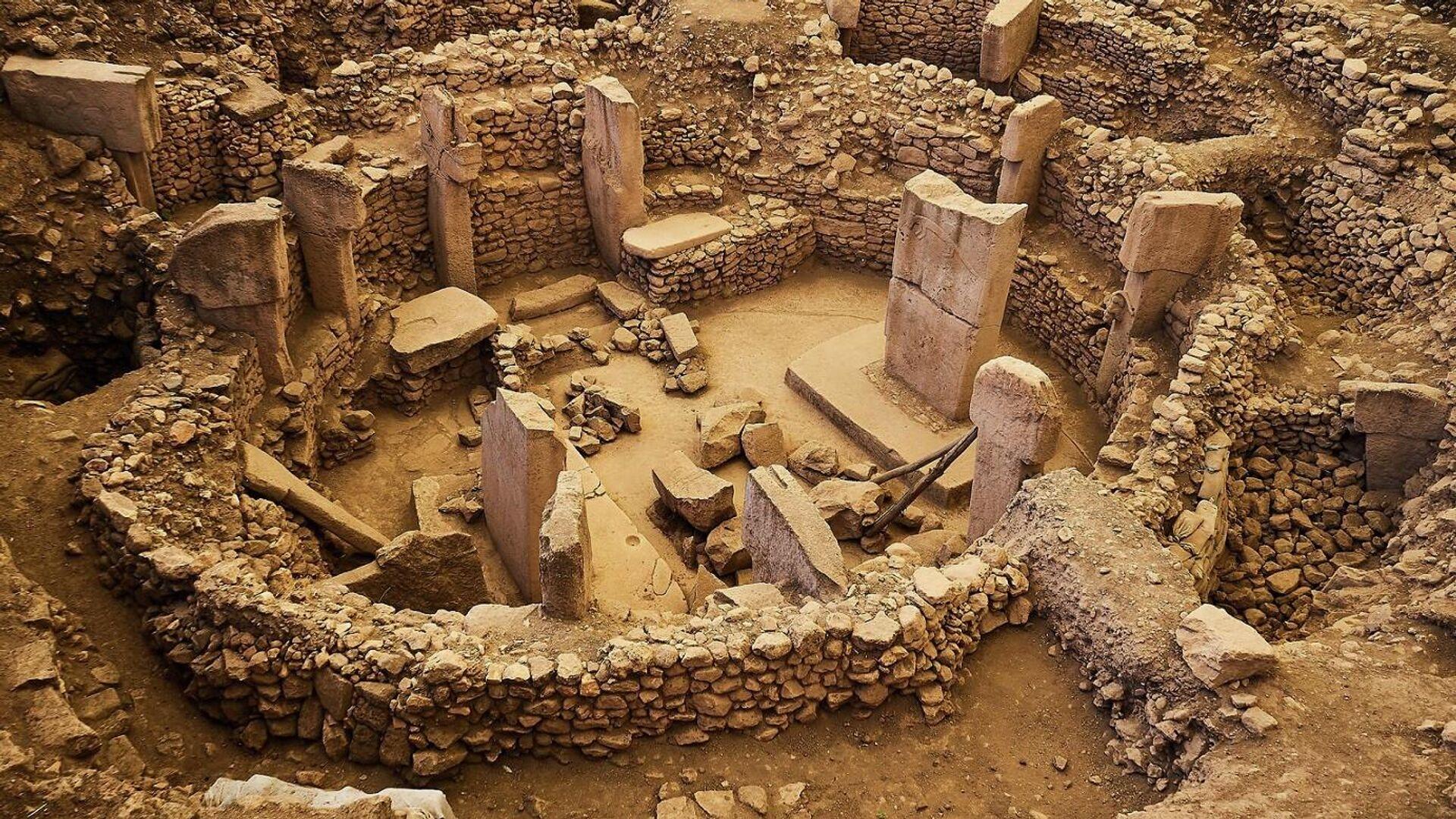
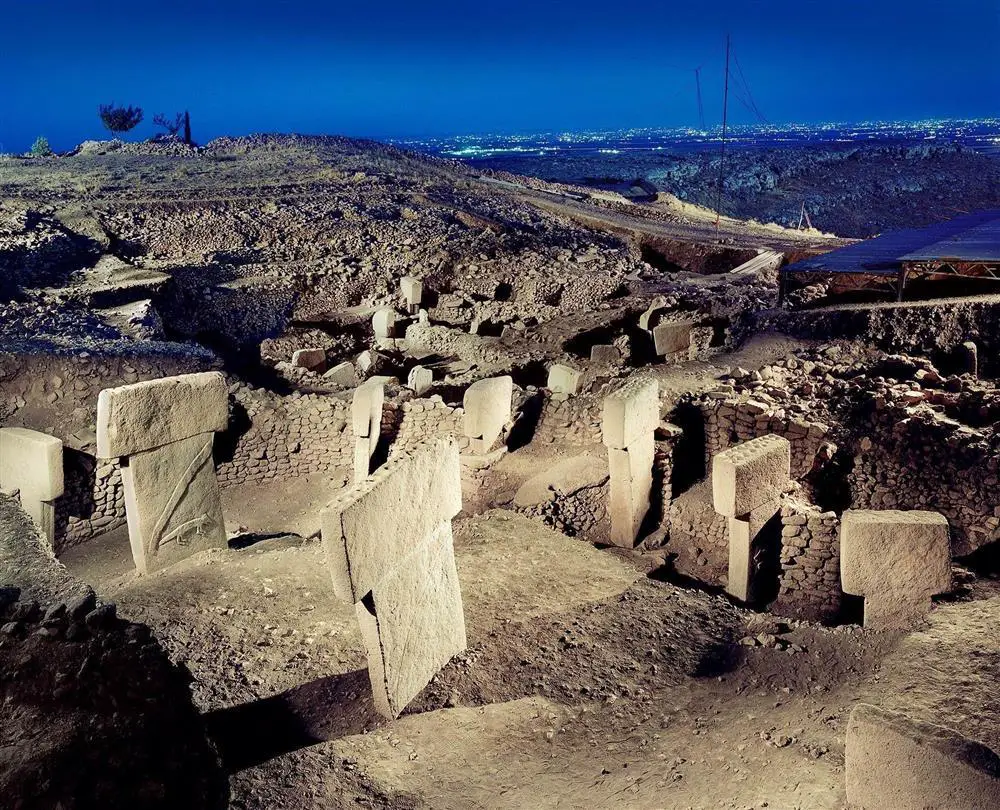
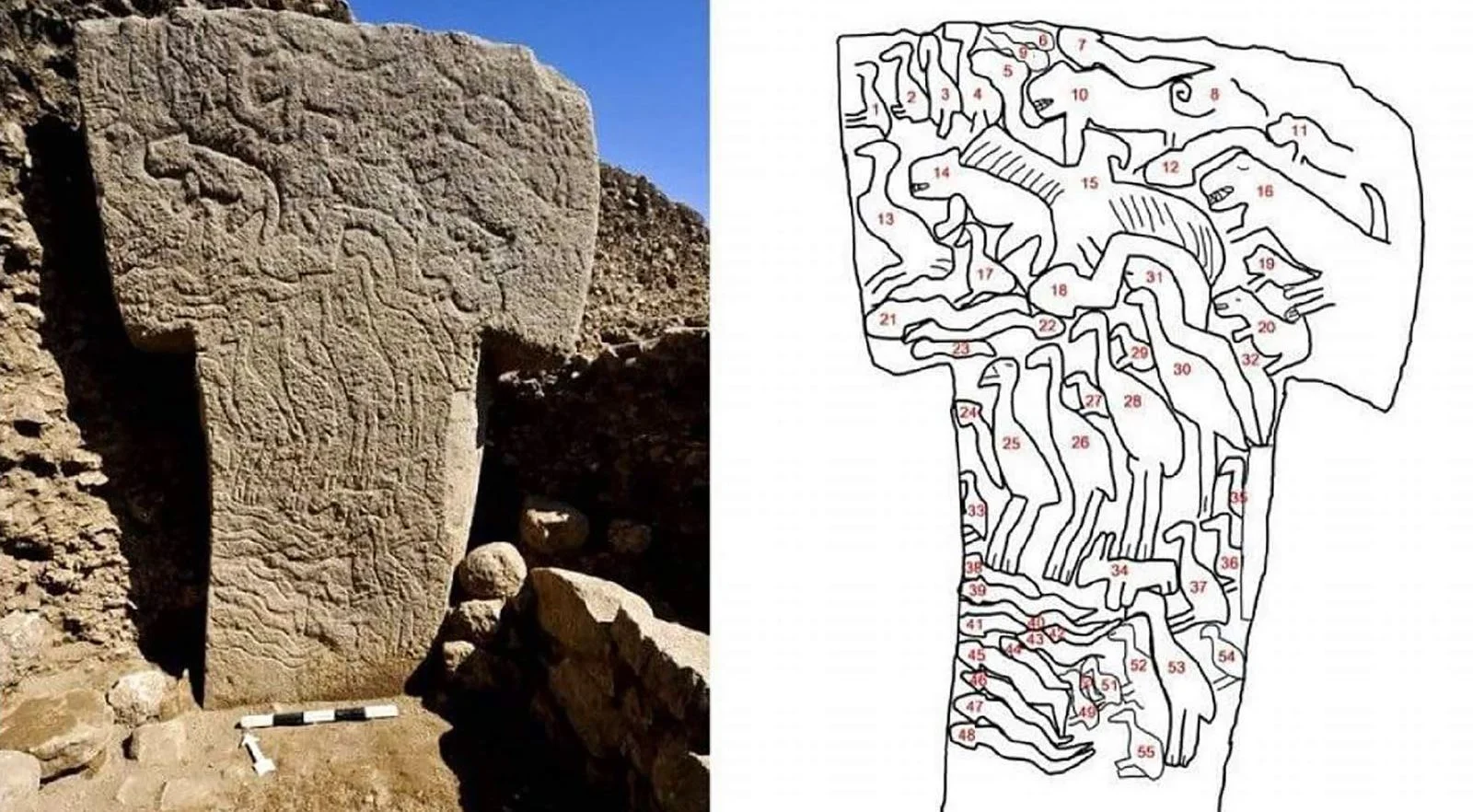

In the Neolithic era, temples were structures of central importance to society. The historical importance of Göbeklitepe was realized with the discovery of this temple complex. Archaeological excavations in the area where Göbeklitepe is located show that it was a center of faith and religious rituals. This discovery contributes greatly to the understanding of cultural transformations in human history.
Göbeklitepe’s historical significance, archaeological discoveries and its Neolithic age require further research and study. New discoveries in this field will further clarify the role of Göbeklitepe in human history.
Characteristics of Göbeklitepe Architecture
The features of Göbeklitepe’s architecture reflect the unique structure of this ancient temple and the stonemasonry skills of the period in which it was built. Stonemasonry is of great importance in the architecture of Göbeklitepe. Although Göbeklitepe was built in the Neolithic period, the stonework was realized with incredible delicacy and precision.
The obelisks are one of the most remarkable architectural features of Göbeklitepe. These obelisks are decorated with various symbols and figures and carry symbolic meanings.
“Although the obelisks of Göbeklitepe weigh eighty tons, they are carved with magnificent stonework. They are incredibly shaped, detailed and decorated. This is a great achievement of Göbeklitepe’s architecture.”
Göbeklitepe architecture is also an interesting example of Neolithic construction techniques. The skillful assembly of stone blocks and the creation of large stone structures show how advanced the construction techniques of that period were.
Stonemasonry and the Symbolic Meanings of Obelisks
The stonework in Göbeklitepe reflects the technical skills and aesthetic understanding of the people of that period. The obelisks reflect the religious and symbolic meanings of the time. The symbols and figures on each obelisk are full of mysteries for historians and archaeologists that still need to be solved. These symbols are thought to have a variety of meanings and may refer to Göbeklitepe’s religious rituals or social structures.
Features of Göbeklitepe Architecture:
| Feature | Description |
|---|---|
| Stone Craftsmanship | Göbeklitepe’s stonework reflects the technical skills of that period. The skillful processing and assembly of large stone blocks is a great achievement. |
| Obelisks | The obelisks at Göbeklitepe are carved with incredible stonework and decorated with symbols. Their symbolic meanings and functions are still being researched. |
| Megalithic Structures | The architecture of Göbeklitepe includes large stone structures called megalithic buildings. These structures show how advanced the construction techniques of that period were. |
The features of Göbeklitepe architecture emphasize the importance of this ancient temple and the architectural skills of that period. The stonework and obelisks fascinate with the uniqueness and mystical beauty of Göbeklitepe.
Construction Techniques of Göbeklitepe Structures
Göbeklitepe’s construction techniques emphasize the traditional methods used to build these ancient temples, such as stone carving and stone chiseling. These techniques reveal the uniqueness and durability of Göbeklitepe’s architecture.
Stone carving is the main construction technique of Göbeklitepe structures. In this technique, large blocks of stone are carefully worked and shaped. The stone carving method is particularly remarkable for the architectural details and symbols carved into the stone surface. In this way, some of the oldest and most detailed stone carvings known at Göbeklitepe were created.
Stone chiseling is another important method used to create the large stone obelisks of the structures at Göbeklitepe. In this technique, hard stones are first chiseled to shape the stone surfaces and then carefully carved to add fine details. As a result, the obelisks at Göbeklitepe are carved with extraordinary precision and decorated with symbols.
Stone carving and stone chiseling techniques contributed to the strength and durability of Göbeklitepe’s structures. These traditional building techniques reveal the fascinating detail and complexity of Göbeklitepe’s architecture.
| Construction Technique | Description |
|---|---|
| Stone Carving | Shaping the stone blocks and engraving the symbols on the stone surface |
| Stone Chipping | Chiseling and detailed carving of stone obelisks |
Large T-Type Obelisks at Göbeklitepe
The large T-type obelisks found at Göbeklitepe are one of the most prominent features of this ancient temple complex. These obelisks are remarkable for their symbolic meaning and interesting characteristics.
The symbolism of the Large T-type obelisks at Göbeklitepe reflects the cultural and religious understanding of the Neolithic period. These obelisks may have been used to represent the beliefs of the people at that time and the sacred space. In addition, the symbols and signs on them provide clues about the rituals and religious practices of the society.
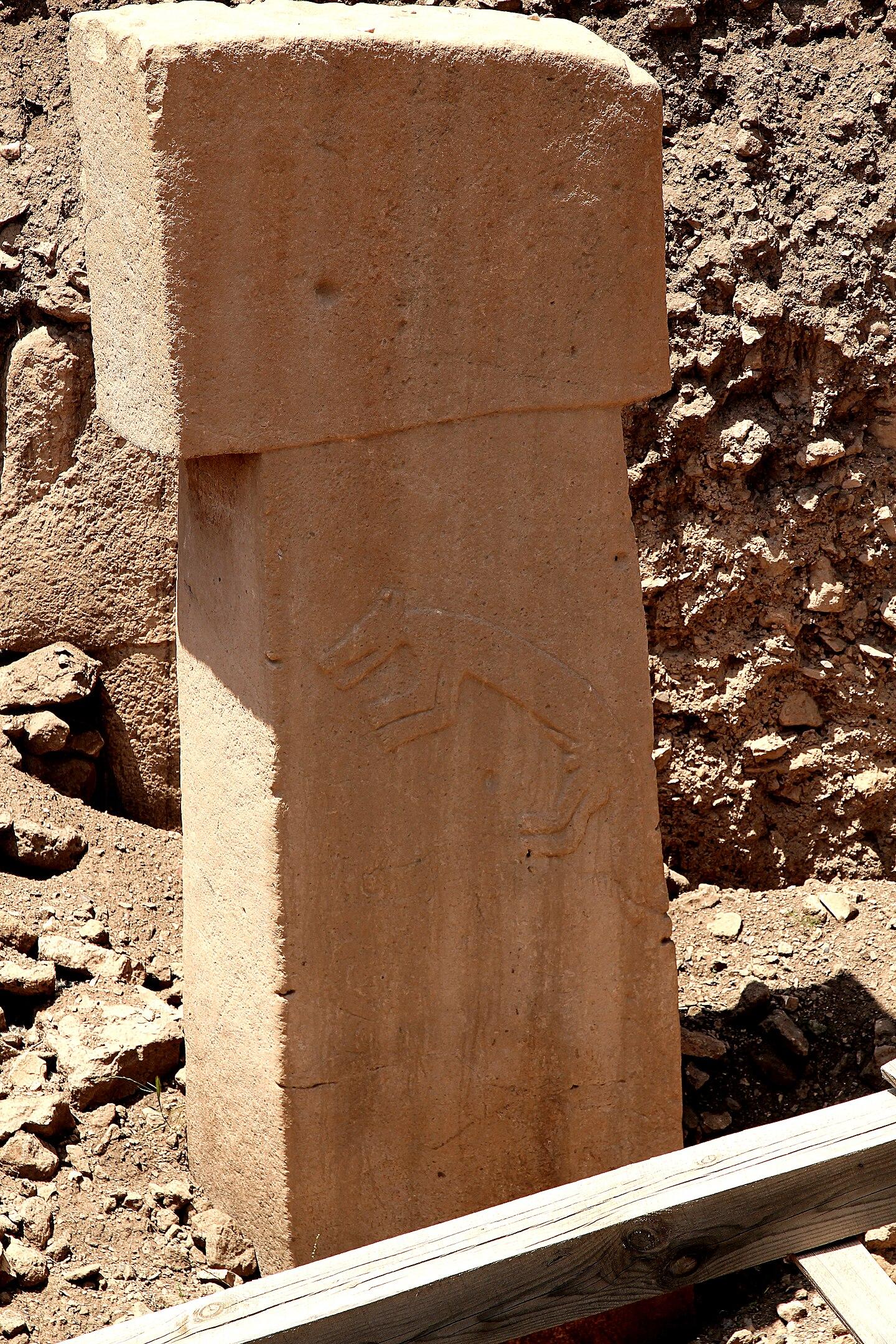
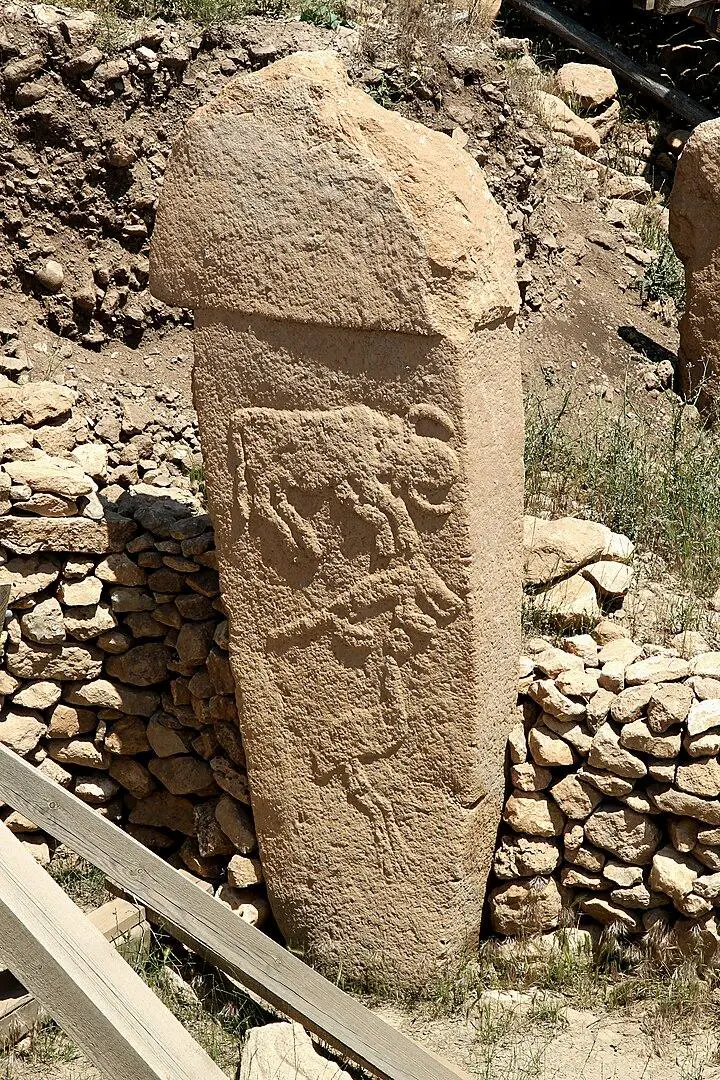
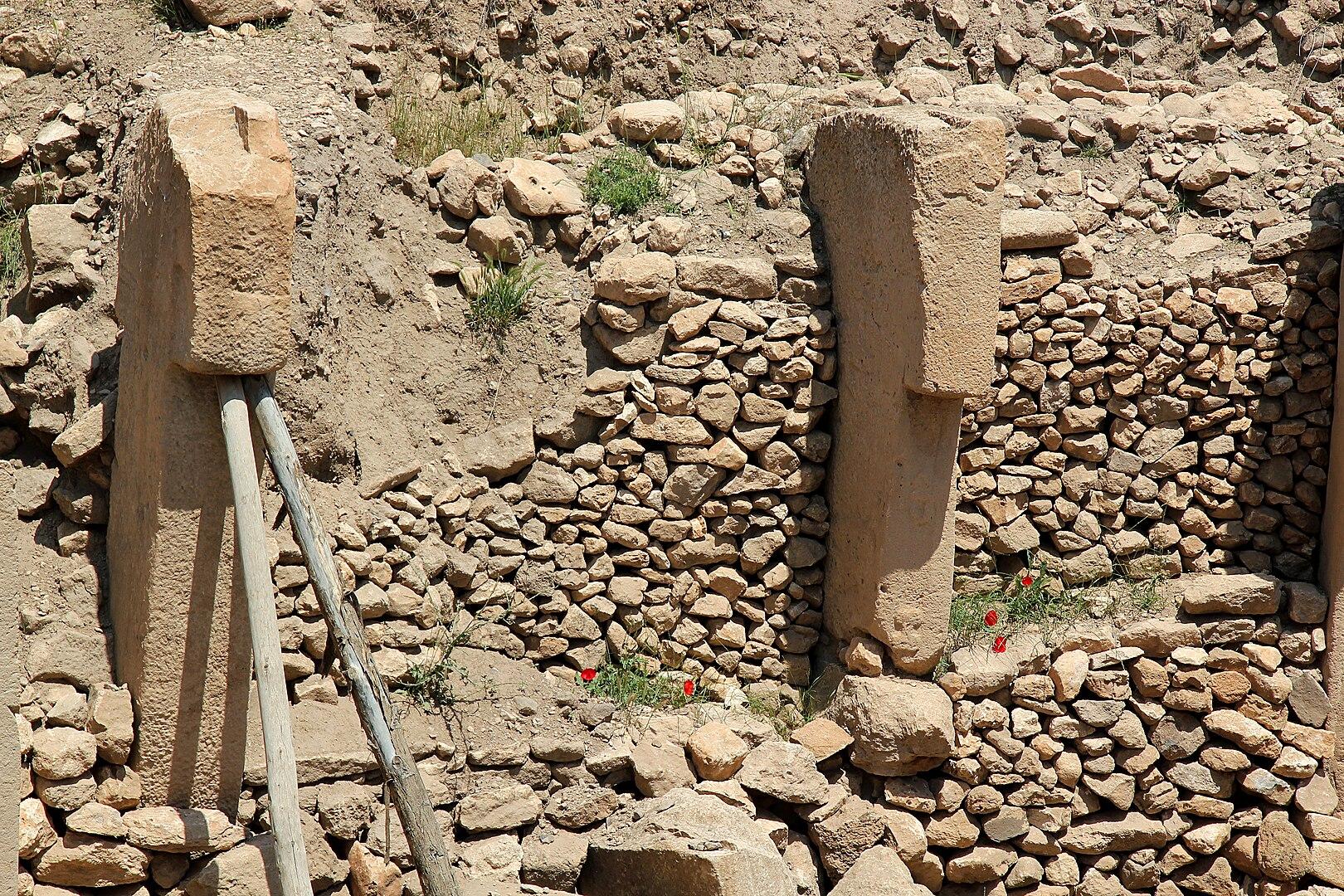


The large T-type obelisks consist of T-shaped rectangular stone blocks, usually ranging from 3 to 6 meters in height. These obelisks were carved using stone carving and stone chiseling techniques and are considered an indication of architectural mastery.
The symbolic meanings and significance of the large T-type obelisks have been of great interest to archaeologists. These obelisks provide important clues for understanding the historical and cultural significance of Göbeklitepe. In addition, these obelisks provide a great resource for researchers in the fields of stonemasonry and symbolism.
Animal Depictions at Göbeklitepe
The animal depictions at Göbeklitepe are one of the most striking features of this ancient temple complex. These depictions, which contain symbolic meanings and clues to the Neolithic period, shed light on the prehistoric period of the region and the cultural beliefs of the people.
The communities living in Göbeklitepe during the Neolithic period decorated the buildings with figures depicting animals. These figures on obelisk columns include symbolic representations of various animals. Wild animals, in particular, symbolize the power of society and its devotion to nature, which is linked to hunting.

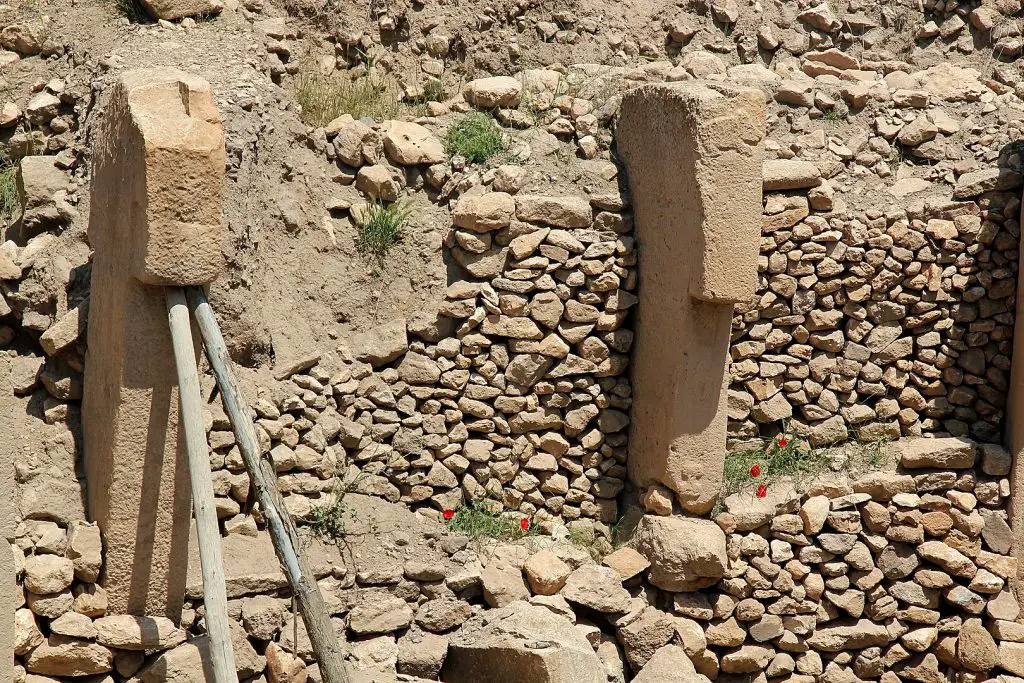
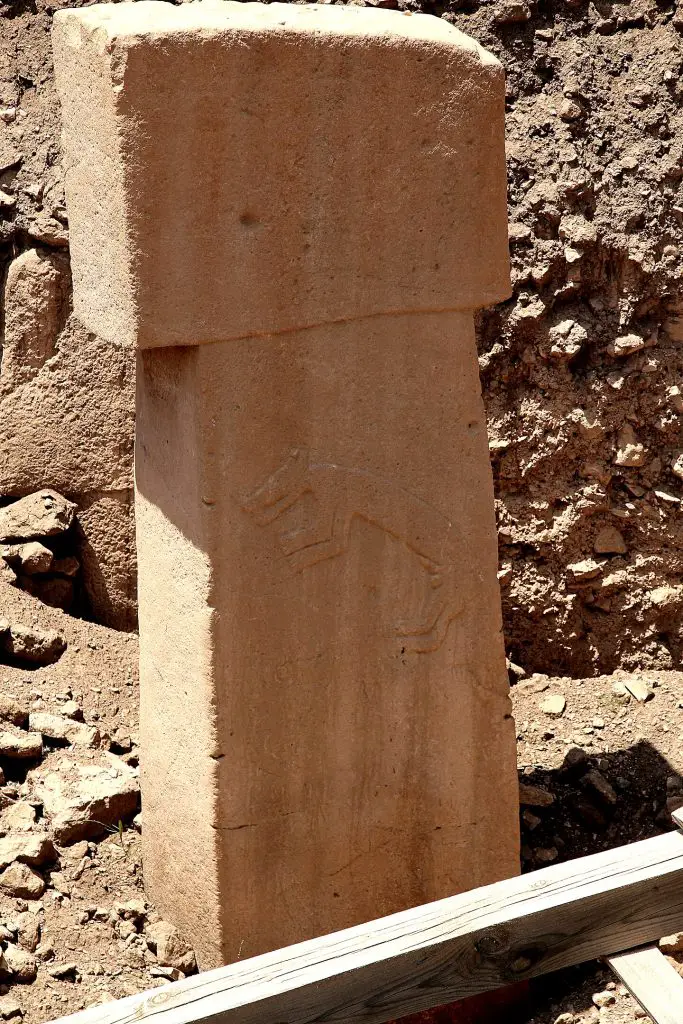
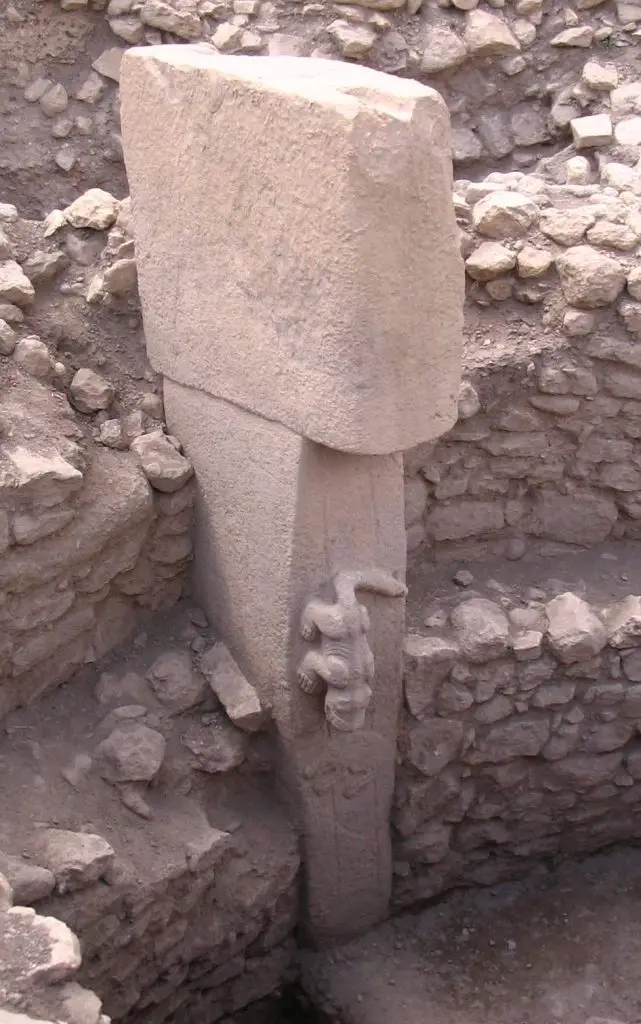
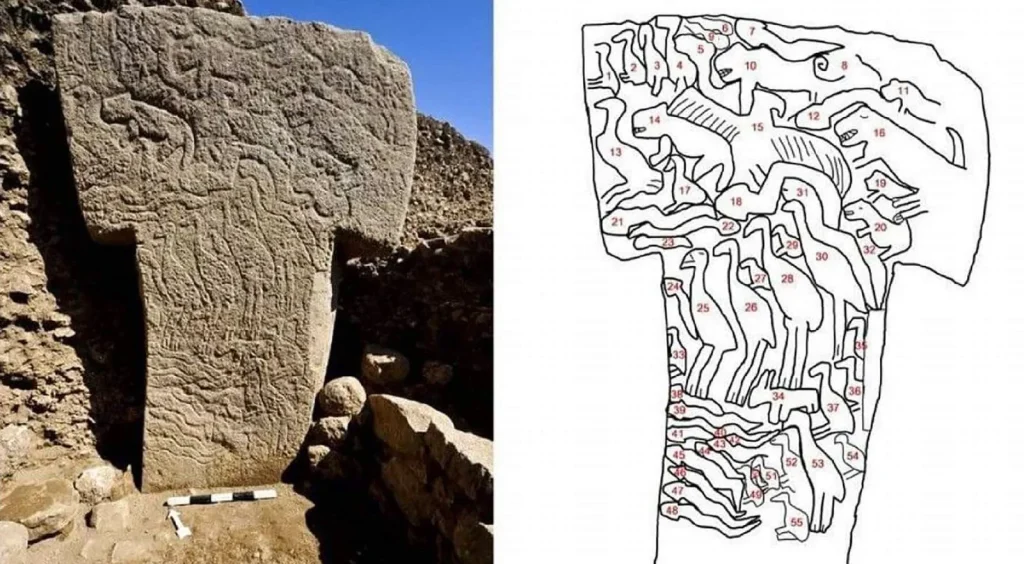
The symbolic meaning of the animal depictions has led to different interpretations among researchers. Some believe that these figures were used in rituals and are indicative of religious beliefs. Others suggest that the animals are related to the social and economic structure of the society.
The main animal depictions include wild boars, vultures, snakes, wild goats and aurochs. The choice of these animals probably reflects the society’s close relationship with hunting, the natural environment and the life cycle.
These Neolithic animal depictions emphasize the archaeological and symbolic significance of Göbeklitepe. These finds expand our understanding of human cultural and religious development, symbolism and the Neolithic period.
| Animal | Symbolic Meaning |
|---|---|
| Wild Boar | Symbol of a society associated with power and hunting |
| Akvaba | Symbol of social beliefs linked to execution and death |
| Snake | A symbol of supernatural powers, healing and transformation |
| Wild Goat | Symbol of mountainous areas and connection to nature |
| Wild Ox | Symbol associated with righteousness, fertility and productivity |
Temple Classification and Functions
The temples uncovered at Göbeklitepe have been subjected to various classifications by archaeologists and experts. These classifications are based on the temples’ architectural structures, ritual functions and social structure. Understanding the classification of Göbeklitepe temples and their functions is an important topic in which religious rituals and social structures are examined in depth.
Category 1: Rectangular Temples
Temples in this category have a rectangular basic plan. These temples include a large central area, often supported by stone obelisks. The rectangular temples served as the main space for the religious rituals of the community. In addition, rooms with ritual objects and altars were also located in these temples.
Category 2: Temples with Round Plans
The round-plan temples have a circular structure surrounding a central courtyard. These temples contain spaces used for social and religious activities of the community. The round temples often functioned as places for social activities such as dancing, music and religious ceremonies.
Category 3: Twin Temples
Temples belonging to this category consist of two separate parts and are symmetrically placed to each other. Twin temples may have been used to perform religious rituals of different religious communities or private groups. Each temple has its own special religious objects and functions.
| Temple Classification | Features | Function |
|---|---|---|
| Rectangular Temples | Rectangular foundation plan | The main venue for religious rituals |
| Temples with Round Plans | Round enclosing structure | Venues for social and religious activities |
| Twin Temples | Two separate symmetrical sections | Rituals of different religious communities or special groups |
Gobeklitepe Models and Their Imaginary Meanings
Göbeklitepe has been an archaeological site admired by people throughout history. The symbolic meanings and mysteries of Göbeklitepe are a great attraction, especially for those who want to see it.
Models are important tools for better understanding the architecture and symbolism of Göbeklitepe. Göbeklitepe models provide a visual narrative as miniature representations of the original stone obelisks, structures and symbols. These models take you on a journey into the complex symbolic world of Göbeklitepe.


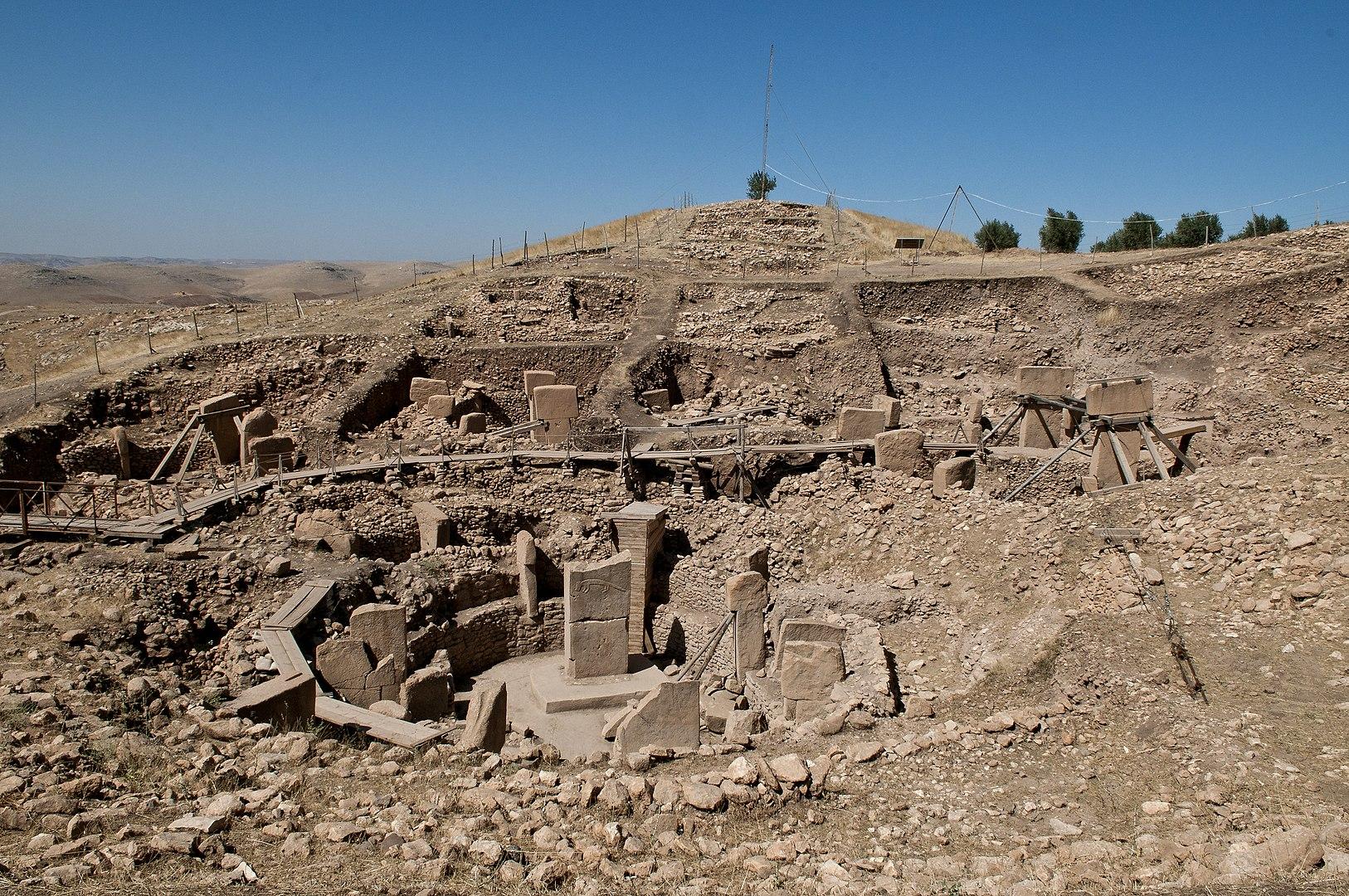

“The Göbeklitepe models are a great help in exploring the symbolic meanings of Göbeklitepe. By visualizing Göbeklitepe’s unique architecture and symbols in a 3D perspective, these models provide an in-depth understanding of humanity’s cultural and religious evolution.” – Dr. Mehmet Özdoğan, Archaeologist
The models of Göbeklitepe are worth studying and analyzing carefully. The imaginary meanings of the symbols and signs on each model illuminate unknown aspects of Göbeklitepe. These symbols, objects and figures are associated with the religious and cultural rituals of Göbeklitepe. The details on the models allow you to grasp the symbolic language of Göbeklitepe.
Examples of Gobeklitepe Models and Imaginary Meanings:
| Model | Imaginary Meaning |
|---|---|
| Gobeklitepe Columned Temple Model | Associating the temple with religious rituals and social structures |
| Gobeklitepe Obelisk Model | Explanation of the power and divine symbolism of obelisks |
| Gobeklitepe Animal Figure Model | The connection of animal imagery with symbols and the cult of nature |
| Gobeklitepe Structure Model | Reflecting the symbolic meaning and arrangements of temple architecture |
Göbeklitepe models are a unique resource for researchers, students and enthusiasts to explore the symbolism of Göbeklitepe and understand the interesting imaginary meanings hidden within. These models offer a unique experience for anyone who wants to understand the mystical world of Göbeklitepe and learn more about the Neolithic period.
Archaeological Conservation of Göbeklitepe
The archaeological conservation of Göbeklitepe aims to preserve the value and permanence of this cultural heritage. Excavations and restoration work are of great importance to ensure the sustainability of the historic structures in the area.
Göbeklitepe’s permanent structures, in particular, can be damaged by natural factors as well as human activities. Factors such as soil erosion, rainfall, climate change and tourist influx can affect the durability of the structures. Therefore, conservation work includes not only restoration but also preventive measures against future damage.
“Göbeklitepe conservation efforts ensure that this unique archaeological site is passed on to future generations and its cultural heritage value is preserved.”

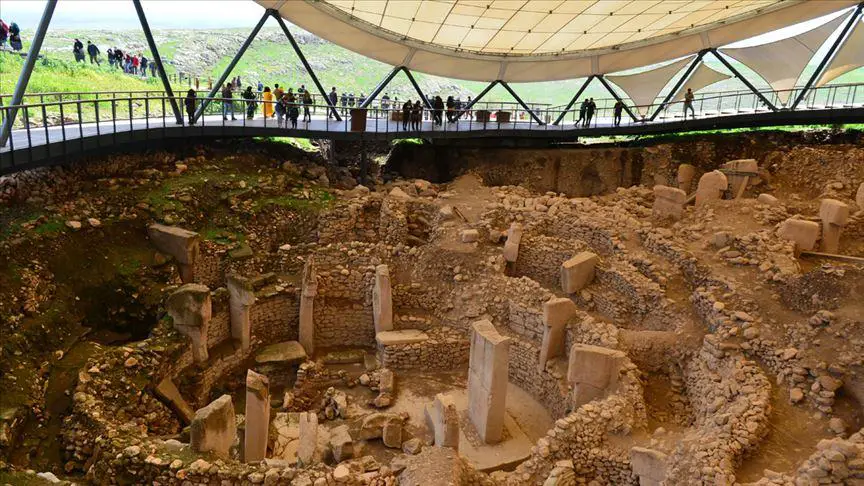

Interregional cooperation and international support are also important. Scientists, archaeologists, restoration experts and local authorities are working together to protect Göbeklitepe. UNESCO and other cultural heritage organizations also support conservation efforts.
The conservation work emphasizes the historical, architectural and cultural significance of Göbeklitepe. The successful completion of these works will ensure that Göbeklitepe retains its fascinating atmosphere for future visitors and researchers. The preservation of Göbeklitepe will ensure its enduring value both as part of Turkey’s cultural heritage and as a globally significant archaeological site.”
Göbeklitepe and Other Archaeological Sites of Anatolia
Göbeklitepe is one of the most important archaeological sites in Anatolia and has close relations with other ancient sites in the region. Anatolian archaeology is renowned for its rich cultural history and historical sites. Göbeklitepe forms an important part of this rich archaeological heritage.
Located in Şanlıurfa province in southeastern Turkey, Göbeklitepe is considered to be the oldest temple complex from the Neolithic period. However, Göbeklitepe should not be thought to be linked only to archaeological sites in this region. Göbeklitepe can also be associated with archaeological works in Anatolia in general.
Anatolia is a geography that has been home to various civilizations for thousands of years. For this reason, there are countless archaeological sites in the region. These sites enable a journey into the depths of history and shed light on human history.
Göbeklitepe’s relationship with archaeological sites stems from the fact that it has structures from a similar period. Factors such as similar architectural features, the function of the temples and the use of symbols show the connection between Göbeklitepe and other archaeological sites.
Anatolian archaeology is a fascinating field for history, culture and archaeology enthusiasts. Göbeklitepe is one of the most important and intriguing archaeological sites in this area. Visiting Göbeklitepe along with other historical sites of Anatolia is a great opportunity to experience this unique cultural heritage.
Göbeklitepe and its place in human history
Göbeklitepe is recognized as one of the most important discoveries in human history. This ancient temple complex has an important role in understanding cultural transformation and social changes.
Throughout human history, cultures and civilizations have changed and evolved. Göbeklitepe offers us a unique window to understand this change. In the Neolithic period, with the transition to settled life based on agriculture, people started to buildpermanent structures and began to engage in visual arts. Göbeklitepe is an important milestone in this transformation process.
This ancient temple complex has an architecture so old and sophisticated that it requires us to rethink human history. The obelisks and decorations reflect the religious and cultural beliefs of the society at the time. The architectural details and symbolic meanings of Göbeklitepe help us understand the mindset and social structure of people at that time.
The discovery of Göbeklitepe has shaken our assumed knowledge of human history and shown that prehistoric societies were much more advanced than we had expected. This is an important example of how fast cultural transformation can take place.
Göbeklitepe provides archaeologists with an important resource for understanding the social, religious and architectural structure of the prehistoric period. This site is also an indicator of the impact of archaeological research and discoveries on human history.
| Subject | Detail |
|---|---|
| Cultural Transformation | The discovery of Göbeklitepe plays an important role in understanding processes of cultural transformation. |
| Social Change | Göbeklitepe offers us important clues to understand the changes and evolution in the structure of societies. |
| History of Humanity | Göbeklitepe has the potential to rewrite our history by shedding light on the oldest periods of human history. |
Today, the addition of Göbeklitepe to the UNESCO World Heritage List and its protection emphasizes the importance and value of this monumental structure. Studying Göbeklitepe to understand the origins of human history is a great opportunity for those working inarchaeology and anthropology.
New Research on Göbeklitepe
New research is constantly being conducted to learn more about Göbeklitepe’s past. Recent discoveries and scientific studies further illuminate the mysteries and significance of this ancient temple.
Recent Excavations at Göbeklitepe
New research and excavations provide important information about the structure of Göbeklitepe. Recent excavations show that the temple complex is even larger and reveal more details. Work is also underway to understand the symbolic meaning of the obelisks and the religious rituals performed in the temple.
Newly Discovered Works of Art
The newly discovered artworks at Göbeklitepe reveal the symbolic and artistic significance of the temple complex. Analyses show how animal imagery was used and provide clues about the cultural and social structure of the Neolithic period.
Scientific Studies and Analyses
Scientific studies and analyses to understand Göbeklitepe offer a more comprehensive view of the period in which the temple complex was built and the way people lived. Paleobotanical analyses provide important information about vegetation and climate changes in the region, while isotope analyses help us understand the migratory movements and social relationships of the people who came to the temple.
| New Research | Discoveries | Scientific Studies |
|---|---|---|
| Göbeklitepe’s burial sites are being examined | New obelisks are being discovered | Religious rituals of the temple complex under study |
| Exploring the symbolic meanings of works of art | New findings on social structure are emerging | Paleobotanical analyses are carried out to determine vegetation cover |
| Isotope analysis reveals human migration patterns | Deciphering the symbolic meaning of animal depictions | Investigating people’s eating habits |
This new research on Göbeklitepe is helping us to better understand our past and the history of humanity at that time. As discoveries and scientific studies continue, more of Göbeklitepe’s secrets will be revealed and our admiration for the importance and impact of this ancient temple will continue to grow.
Frequently Asked Questions About Gobeklitepe
What are the details about the discovery of Göbeklitepe?
The discovery of Göbeklitepe includes details about the megalithic structures that attracted the attention of archaeologists and their historical significance.
What is the historical significance of Göbeklitepe?
The historical significance of Göbeklitepe is linked to the discovery of the temple complex, thought to belong to the Neolithic era.
What are the features of Gobeklitepe architecture?
The features of Göbeklitepe architecture include the subtleties of stonemasonry and the symbolic meanings of the obelisks.
What are the construction techniques of Göbeklitepe structures?
The construction techniques of Göbeklitepe structures have the privilege of using traditional methods such as stone carving and stone chiseling.
Can you tell us about the large T-type obelisks at Göbeklitepe?
Information is given about the symbolic meanings and interesting features of the large T-type obelisks in Göbeklitepe.
What do the animal depictions in Göbeklitepe mean?
The animal depictions at Göbeklitepe are among the most important finds that contain symbolic meanings and clues about the Neolithic period.
What do we know about the classification and functions of the temples at Göbeklitepe?
The classification and possible functions of the temples at Göbeklitepe are addressed through the study of religious rituals and social structures.
Can you give detailed information about the symbolism of the Göbeklitepe models and their imagery?
Detailed information on the symbolism of Göbeklitepe models and their imagery is provided.
What do we know about the archaeological conservation efforts and cultural heritage status of Göbeklitepe?
The importance of Gobeklitepe’s archaeological conservation efforts, protection of permanent structures and cultural heritage status are emphasized.
What do we know about the relationship and importance of Göbeklitepe with other archaeological sites?
Information about the relationship and importance of Göbeklitepe with other archaeological sites in Anatolia is presented.
What can be said about Göbeklitepe’s place in human history?
It focuses on the place of Göbeklitepe in human history and the important role it plays in understanding cultural transformation and social change.
What do we know about new research on Göbeklitepe?
Up-to-date information about new research, recent discoveries and scientific studies on Göbeklitepe is presented.
My Thoughts About Gobeklitepe
Göbeklitepe remains a unique archaeological site that sheds light on human history. This ancient temple complex is full of discoveries that have rewritten not only the history of Anatolia but also the history of the world. Göbeklitepe’s findings have helped us to gain a deeper understanding of humanity’s transition from hunter-gatherer to agricultural society. These discoveries also provide important clues about the belief systems, cultures and social structures of Neolithic people.
The significance of Göbeklitepe is not only scientific, but also of great value in terms of the common heritage and cultural richness of humanity. This ancient site functions as a nexus between different cultures, offering an exciting window into the origins of humanity. The preservation and understanding of Göbeklitepe is critical to understanding our past and passing it on to future generations.
The discovery of Göbeklitepe is a revolutionary event in archaeology and history. As the oldest known temple complex in the world, this ancient site has attracted worldwide attention with its unique insights. The discovery of Göbeklitepe will continue to shed light not only on the history and cultural heritage of Turkey, but of all humanity. Therefore, preserving this unique heritage and passing it on to future generations is a great responsibility and we must act with the awareness of this responsibility.
If you haven’t read it yet, you can also check out our review of Solomon R. Guggenheim Museum – Modern Splendor…
Architect: Unknown
Architectural Style: Circular obelisks, T columns.
Year: 10,000-8,000 BC
Date of Discovery: 1994
Location: Örencik,Şanlıurfa







